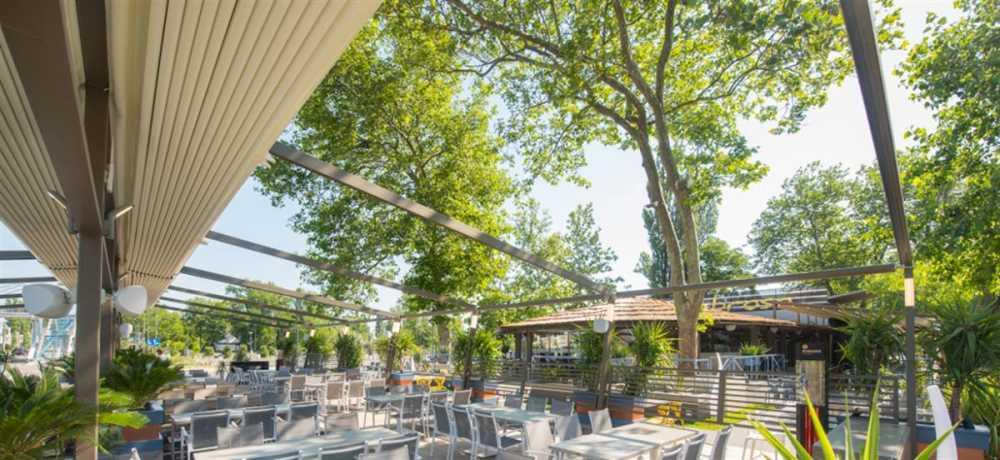Urban oases: green, sustainable architecture in the city

For some years now, technology and innovation have been the protagonists of a green revolution that has also influenced urban architecture.
Thus in many large cities we see the construction of buildings covered with trees, ecological skyscrapers and apartment complexes with a low environmental impact: a revolution where the greenery that once was limited to parks and gardens has now become an element used in urban planning.
Attention is being paid to the balance between the environment and human life, proposing new ways of interpreting space, designing energy efficient buildings and incorporating practicality and housing needs in the best possible manner.
Let's review some recent architectural trends and learn some more about sustainable architecture by taking a look at the most interesting examples of green construction techniques, exploring structures that are transforming our cities, making them more and more liveable.
Sustainable architecture and green architecture: some clarifications
Before reviewing the most spectacular green architecture of our century, we need to understand what is meant by sustainable construction.
Sustainable architecture: balance between man and the environment
The subject is certainly very broad but for an architectural construction to be truly sustainable it must certainly:
- Take into account the human-environmental balance from the early stages of design.
- Have a minimal impact on the surrounding ecosystem.
- Use materials manufactured with a sustainable production cycle from the beginning.
- Use renewable resources, like certain techniques for the disposal and reuse of wastewater.
In a project of this kind it is also essential to take into account the role of the communities that will benefit from the building itself: the everyday behaviour of its users will have to align with the same virtuous circle.
Green architecture, reconnecting with nature
A green building – covered with plants or containing vegetation, for example – is not necessarily also sustainable, though it is undeniable that the presence of greenery encourages daily communion with nature, allowing those who live in large cities to enjoy corners of tranquillity.
Now that we've clarified these points are you ready to get started?
Skyscrapers, offices, homes and schools: examples of green architecture around the world
Now let's look at some examples of innovative architecture, projects developed by great architects that can be a source of inspiration for recreating natural corners in the city, even on a much smaller scale, or – why not – in your home.
Milan, Vertical Forest
Our first stop is 100% Italian: we start in Milan, just a few steps from Piazza Gae Aulenti, where looking skywards we are overwhelmed by the view of the Vertical Forest. Designed by the architect Stefano Boeri, it is a skyscraper with terraces decorated with plants, trees, bushes and shrubs that create a plant-based exterior to combat the urban heat island effect and change appearance over the seasons, in a continuum between architecture and nature that is unique in the world.
Paris, Musée du quai Branly and Mille Arbres
From Milan we travel to Paris, to the entrance of the Musée du quai Branly, a museum of art and civilisations of Africa, Asia, Oceania and the Americas overlooking the Seine and designed by Jean Nouvel. For decades the structure has been distinguished by the predominant presence of greenery on the walls facing the street. The project was curated by the landscape architect Gilles Clément and botanist Patrick Blanc, who created a museum complex enriched by lush gardens and natural elements inside and out, creating a green space overlooking the boulevards.
Also under way in Paris is the Mille Arbres project, the ingenious work of the couple Fujimoto-Rachdi from OXO Architects, which calls for the planting of a thousand trees on the roof of a multifunctional building that will connect the centre and the periphery, thus becoming a cradle for biodiversity at the gates of one of the most beautiful cities in the world.
San Francisco, Public Works Commission Building
Next we'll fly across the Atlantic to admire the glass façade of the San Francisco Public Works Commission building designed by KMD Architects: a skyscraper that today exceeds the 55% energy efficiency required by the state, achieving a very high level of performance.
Vancouver, The Heights
Now we're on to Vancouver, Canada to explore The Heights, an apartment complex measuring over 60,000 square metres and built according to the principles of passive architecture, a set of techniques that, thanks to highly insulating materials, make it possible to create an ideal microclimate inside the residences, thus allowing for the reduced use of heating systems.
Lagos, Makoko Floating School
Our last stop is in front of the amazing Makoko Floating School in Lagos, Nigeria, designed by Nlè Architects, a floating school built with reclaimed materials that uses renewable energy and collects rainwater, the result of a careful design that meets the needs and habits of local people.
Our cities are slowly changing their appearance, including architectures that focus on eco-friendliness and sustainability. Why not do something similar for your own home, like creating a flowery pergola or a winter garden?
The search for a harmonious relationship between nature and living spaces is the characteristic trait of Corradi's solutions: custom projects that reconcile outdoor living with the need for style and functionality.
